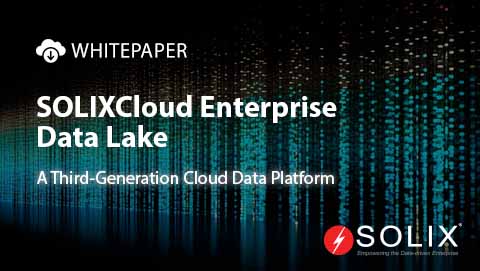Pseudonymization
What is Pseudonymization?
Pseudonymization is a sophisticated data masking technique that replaces or encrypts sensitive information with pseudonyms or aliases, rendering it more secure and privacy-compliant, such as GDPR, PCI DSS, HIPAA, LGPD, PIPL, etc. A pseudonym is a fictitious identifier that can stand in for a real person or entity.
This technique itself is considered reversible, but the level of reversibility depends on the specific method used to create the pseudonym. Its reversibility, achievable through a key or mapping, enables the recovery of the original data. It encompasses techniques like tokenization, encryption, and Format-Preserving Encryption (FPE).
How does Pseudonymization work?
The inner workings of Pseudonymization revolve around the intricate process of transforming identifiable data into pseudonyms or encrypted values, safeguarding sensitive information while ensuring the reversible nature of the transformation. Here’s a detailed exploration of how it operates within the broader context of data security and privacy:
- Identification of Sensitive Data: Organizations must identify specific sensitive information within their datasets before implementing the masking. This may include personally identifiable information (PII), protected health information, social security numbers, etc.
- Selection of Technique: Masking with pseudonyms can be achieved through various methods, each offering unique advantages. Common methods include tokenization, encryption, redaction, etc. The choice depends on the data’s specific requirements and the organization’s security and privacy goals.
- Application of Masking Rules: The sensitive data is transformed once the technique is chosen. This step ensures that the original data becomes obscured, reducing the risk of unauthorized access or exposure.
- Secure Key or Mapping System: A secure key or mapping system maintains the process’s reversibility according to the masking technique. This system correlates the mapping keys back to the original data, allowing only authorized users to retrieve the genuine information.
- Integration into Data Processes: It is then seamlessly integrated into various data processes, such as analytics, testing, or research, where the transformed data can be used without compromising individual privacy.
Benefits of Pseudonymization
Here’s an in-depth exploration of its benefits, considering various other data masking techniques and privacy considerations.
- Enhanced Data Privacy: Substituting sensitive data with pseudonyms or encrypted values could reduce the risk of unauthorized access and exposure to data. This proactive measure can align with data privacy regulations and strengthen organizations’ compliance frameworks.
- Preserved Data Utility: Unlike anonymization, which may render data unusable by deleting or blurring it, pseudonymization maintains data usability. This enables access to meaningful datasets while upholding security and privacy standards in various environments.
- Regulatory Compliance: It aids enterprises in achieving and maintaining regulatory compliance, such as GDPR, by actively addressing the requirements for the responsible handling of sensitive data.
- Flexible Data Usage: Organizations can utilize pseudonymized data for analytics, testing, and research, maintaining individual privacy. This flexibility enables businesses to derive valuable insights while upholding ethical data practices.
Use Cases
With its versatile applications, pseudonymized data finds relevance across various industries and scenarios, providing a robust solution to balance data utility and individual privacy. The following use cases highlight the practical applications of it in different domains:
- Health and Finance sector: It secures patient records, enabling secure analyses and fortifying confidentiality in the health sector. Similarly, in finance, it protects client PII for secure transactions, fraud detection, and regulatory compliance.
- Testing and Development: Pseudonymizing sensitive data during testing helps organizations maintain confidentiality and conduct efficient testing without exposing actual PII, reducing risks of f handling sensitive information in development environments.
- Research and Analytics: It facilitates ethical and privacy-compliant research and analytics across diverse industries. Research institutions and data analysts can utilize pseudonymized datasets to derive meaningful insights without compromising individual privacy.
- Pseudonymization Across Sectors: It is vital across sectors. In HR, it secures workforce data. In education, it protects student information while improving services. Governments employ it for transparent analysis. In e-commerce, it ensures customer privacy for personalized experiences.
In summary, Pseudonymization is crucial in modern data management, bridging the gap between privacy and utility. Its versatile applications across industries underscore its importance in complying with regulations while enabling valuable insights. As organizations strive for responsible data handling, it is a fundamental pillar, ensuring the balance between confidentiality and analytical capabilities in an increasingly data-driven world.
FAQs
How does pseudonymization differ from anonymization?
Unlike anonymization, which irreversibly removes all identifying information, pseudonymization substitutes identifiable data with artificial identifiers, allowing for potential reidentification through additional information held separately.
What are the key challenges in implementing pseudonymization?
One significant challenge is ensuring an effective balance between privacy protection and data usability. Maintaining secure storage and management of the pseudonyms and corresponding identifying information is also crucial.
Can pseudonymized data be reversed back to its original form?
In some cases, yes. While pseudonymization obscures direct identification, it’s not irreversible. Access to the pseudonymization key or additional information makes it possible to reassociate the pseudonyms with their original identifiers.
How does pseudonymization contribute to GDPR compliance?
Pseudonymization is recognized as a privacy-enhancing technique under the General Data Protection Regulation (GDPR). It enables organizations to fulfill data protection obligations while maintaining data utility, facilitating compliance with GDPR requirements.





